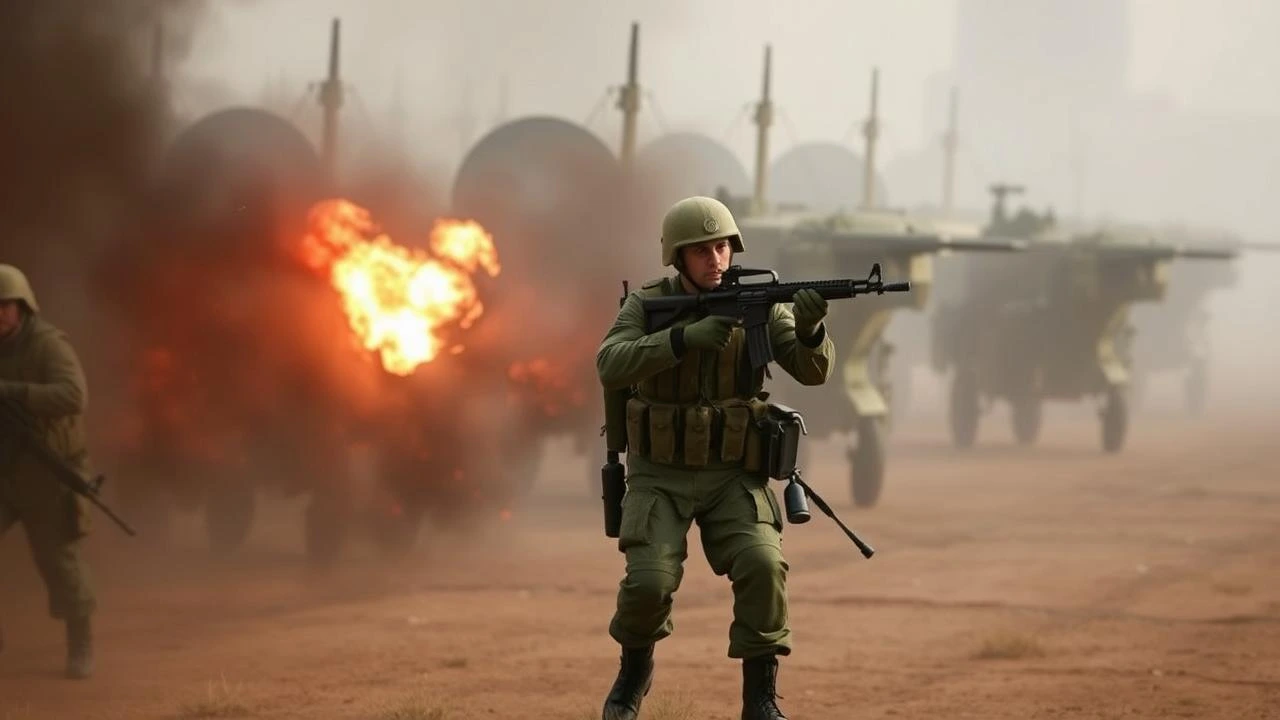The war in Ukraine has sent shockwaves throughout Europe, prompting an urgent reassessment of military readiness among European nations. As a direct response to growing geopolitical threats, countries on the continent are keen to demonstrate their readiness to combat aggression, particularly from Russia. However, the pressing question remains: if a conflict were to arise, would European nations genuinely have the military capability and resolve to engage in warfare?
The Evolving European Defense Landscape
In recent years, Europe has faced various security challenges, from the resurgence of Russian military expansionism to the turmoil in the Middle East. Many European countries have begun to invest more heavily in their armed forces and NATO commitments, seeking to bolster their collective defense mechanisms. Recent efforts to enhance military capabilities include:
- Increased Defense Budgets: Many European nations are increasing their defense expenditure, with the goal of reaching the NATO guideline of spending at least 2% of GDP on defense by 2024.
- Application of Article 5: The North Atlantic Treaty Organization’s Article 5, stating that an attack against one ally is an attack against all, has gained renewed emphasis in light of recent tensions.
- Joint Initiatives: Various European countries are embarking on collaborative defense projects, such as the European Defense Fund and PESCO (Permanent Structured Cooperation), which fosters deeper defense cooperation among EU member states.
This mounting commitment to defense raises the question of whether European nations are genuinely prepared to engage in combat should the need arise.
European Military Capabilities: A Reality Check
While European countries show intent to strengthen their military capabilities, several factors complicate this picture:
- Diverse Military Readiness Levels: European nations possess varying levels of military strength and readiness, often reflecting differing priorities and geopolitical pressures. According to a 2022 report from the European Defence Agency, there remains a significant gap in military capabilities among EU members. Country Defense Budget (2022) Active Personnel Tanks Aircraft France $52.7 billion 203,000 406 1,242 Germany $57.4 billion 184,000 236 634 Italy $29.6 billion 175,000 200 830 Spain $14.9 billion 124,000 248 426 Poland $16.4 billion 120,000 1,000 546
- Political Will: Even with enhanced capabilities, political will is crucial in determining whether nations are willing to engage in conflict. Public sentiment in various European countries favors a diplomatic resolution over military confrontation, presenting a bitter dilemma for leaders faced with aggression.
- Dependence on the United States: Despite increased military spending, many European nations still rely heavily on U.S. military support, particularly for air and naval operations. The extent of this dependency raises concerns over whether European forces can operate independently in times of crisis.
A Shift in Mindset
An essential factor influencing European defense readiness is the prevailing mindset among citizens and political leaders. Unlike past generations who lived through World War II, many Europeans today have grown accustomed to a long period of relative peace and stability. As a result, fostering a war-ready mentality has proven challenging.
As Winston Churchill once quoted,
“To jaw-jaw is always better than to war-war.”
This perspective underscores the European inclination towards diplomacy, making military preparations seem less urgent. However, the aggressive actions seen in areas like Ukraine have begun to shift public perception, with more citizens acknowledging the necessity for military readiness.
The Role of NATO
NATO remains central in Europe’s approach to defense. The alliance not only facilitates intelligence sharing and joint exercises but also serves as a deterrent against potential aggressors. NATO’s solid command structure and mutual defense obligations may be the only reliable bridge between Europe and active combat capabilities.
Key NATO Initiatives
- Enhanced Forward Presence: Deploying multinational battlegroups in Eastern European member states as a deterrent to Russian aggression.
- Increased Training Exercises: Regular military exercises ensure soldiers remain combat-ready, promoting interoperability among member states.
- Cyber Defense Improvements: As threats extend into cyberspace, NATO’s focus on cyber capabilities has become increasingly relevant.
The Perception of War Among European Nations
Despite the financial and logistical efforts to prepare for possible conflicts, one prevailing factor remains: the assertion that Europe is ready for war might be more about posturing than actual readiness. As European nations navigate this complex situation, the following questions arise:
- If Conflict Arose, Would European Nations Step Up?
- How Would Public Opinion Influence Military Decisions?
- Is NATO’s Collective Defense Still Perceived as Strong?
- What Are the Political Implications of War for Europe?
Conclusion
Amidst a climate of uncertainty, Europe is striving to show strength and preparedness in the face of potential conflict. Various nations have taken significant steps to bolster military capabilities; however, political will, public sentiment, and interdependent alliances complicate the situation.
As Europe navigates this reality, the ambiguity remains: Could Europe take collective military action if necessary? While the continent seeks to display readiness and resilience, the effectiveness of this posturing is contingent upon the solidarity and commitment of its individual nations. Ultimately, the appetite for warfare, shaped by both historical context and contemporary challenges, will determine whether Europe would genuinely rise to arms.
FAQs
1. Are European countries increasing their military spending?
Yes, many European nations are in the process of increasing their defense budgets to meet NATO guidelines.
2. How does public opinion impact military readiness in Europe?
Public sentiment generally favors diplomacy over military action, which can influence political decisions and military readiness.
3. What role does NATO play in Europe’s military strategy?
NATO serves as a deterrent against aggression and facilitates collaborative military operations among member states.
4. Is Europe prepared for a major conflict?
Military capabilities vary significantly among European nations, and while efforts are underway to enhance readiness, the collective resolve and will are critical factors.
Europe wants to show it’s ready for war. Would anyone show up to fight?






